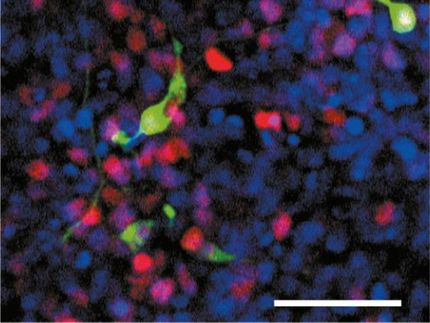Why stem cells need to stick with their friends
Advertisement
Scientists at University of Copenhagen and University of Edinburgh have identified a core set of functionally relevant factors which regulates embryonic stem cells' ability for self-renewal. A key aspect is the protein Oct4 and how it makes stem cells stick together. The identification of these factors will be an important tool in devising better and safer ways of making specialised cells for future regenerative cell therapies for treatment of diseases like diabetes and Parkinson's disease. The results have been published in the scientific journal Current Biology.
Scientists have known that the protein Oct4 plays a key role in maintaining the embryonic stem cells in pure form by turning on stem cell genes, however up until now it has not been know which of the 8.000 or more possible genes that Oct4 can choose from actually support self-renewal.
By comparing the evolution of stem cells in frogs, mice and humans, scientists at the Danish Stem Cell Center (DanStem) and The MRC Centre for Regenerative Medicine in Edinburgh have now been able to link the protein Oct4 with the ability of cells to stick together. They found that for embryonic stem cells to thrive they need to stick together and Oct4's role is to make sure they stay that way.
"Embryonic stem cells can stay forever young unless they become grown-up cells with a specialised job in a process called differentiation. Our study shows that Oct4 prevents this process by pushing stem cells to stick to each other," says Dr Alessandra Livigni, Research Fellow at the University of Edinburgh.
Identification of specific genes
The research teams in Edinburgh and Copenhagen successfully identified 53 genes, out of more than 8.000 possible candidates that together with Oct4, functionally regulate cell adhesion. Almost like finding needles in a haystack the scientists have paved the way for a more efficient way of maintaining stem cells as stem cells.
"Embryonic stem cells are characterized, among other things, by their ability to perpetuate themselves indefinitely and differentiate into all the cell types in the body – a trait called pluripotency. Though to be able to use them medically, we need to be able to maintain them as stem cells, until they're needed. When we want to turn a stem cell into a specific cell for example; an insulin producing beta cell, or a nerve cell like those in the brain, we'd like this process to occur accurately and efficiently. We cannot do this if we don't understand how to maintain stem cells as stem cells," says Professor Joshua Brickman from DanStem, University of Copenhagen.
Future potential
As well as maintaining embryonic stem cells in their pure state more effectively, this new insight will also enable scientists to more efficiently manipulate adult cells to revert to a stem cell like stage known as induced pluripotent stem cells (iPS cells). These cells have many of the same traits and characteristics as embryonic stem cells but can be derived from the patients to both help study degenerative disease and eventually treat them.
"This research knowledge has the potential for us to change the way we grow stem cells, enabling us to use them in a less costly and more efficient way. It will help us devise better and safer ways to create specialised cells for future regenerative medicine therapies," concludes Professor Joshua




















































